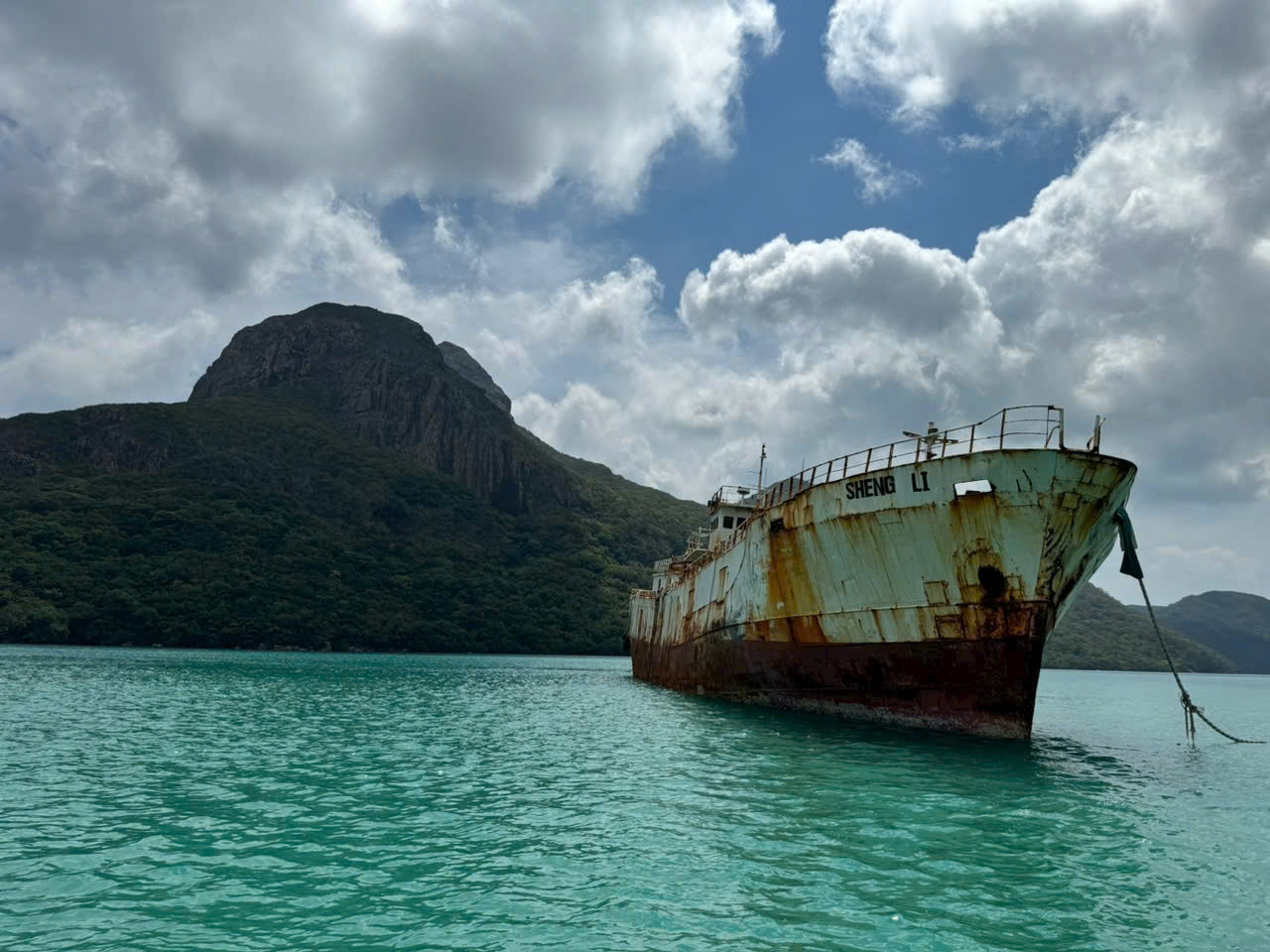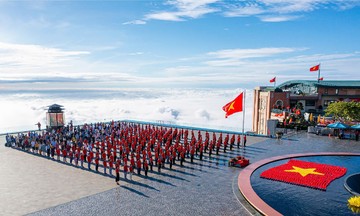Amadive tourism company has proposed sinking the Sheng Li cargo ship, abandoned for over 4 years in Con Son bay, to develop a high-end diving site in Con Dao. Director Ngo Tuan Tu said the 52-meter-long, 12,000-ton vessel is now severely deteriorated, filled with waste, grease, and rusty equipment.
The Sheng Li is currently subject to asset disposal according to a plan approved by the Ba Ria - Vung Tau People's Committee (UBND) before the merger, with a plan to auction it for scrap. The starting price is 1.7 billion VND. According to the procedure, the ship will go through two rounds of auctioning. If no entity participates after both rounds, the proposal to sink the ship for diving tourism development will be considered.
 |
The Sheng Li cargo ship, abandoned for over 4 years in Con Son bay, is now heavily rusted. Photo: *Ngo Tuan Tu* |
Le Truong Hien Hoa, Deputy Director of the Ho Chi Minh City Department of Tourism, confirmed receiving the proposal. The tourism sector supports proactively developing new products but emphasizes the need to comply with current procedures and regulations. Con Dao is a popular seaside destination for international tourists, and diving is a prominent activity.
"If approved by relevant departments and implemented in accordance with all requirements, the shipwreck diving model could become an attractive product, generating sustainable income for Con Dao," Hoa said.
Vo Thi Van, Director of the Con Dao National Tourist Area Management Board, also believes that if the ship is sunk according to regulations and outside the conservation area, the project could create a unique experience for tourists. Many countries have implemented similar models, while Vietnam has not.
Several experts believe that many factors need careful consideration. Tran Tuong Huy, Deputy Director of the Institute for Social Tourism Research, considers the idea of sinking the Sheng Li for shipwreck diving tourism "attractive from a marketing and experience perspective." However, the proposal's feasibility presents several issues.
First, Con Dao's tourism brand needs to be clearly defined to ensure product and service development aligns with long-term orientation.
According to Huy, the market share of professional diving tourists in Vietnam and Con Dao is still small, mainly experienced international visitors with specific needs. Shipwreck diving is not new globally. Many popular diving sites are often associated with ships that have historical stories, cultural value, or legendary elements.
"The Sheng Li is just an ordinary cargo ship, lacking any special elements to create attraction in terms of content," Huy said.
He believes Con Dao's marine ecosystem already possesses natural values like coral reefs and sea turtles. These are crucial for conservation and sufficient for developing diving products without artificial interventions.
 |
Pristine nature in Hon Trung, Con Dao. Photo: *Quy Coc Tu* |
Regarding safety, the proposal needs an environmental impact assessment (EIA) report, demonstrating that the sinking process will not cause pollution, including the complete removal of grease, chemicals, and hazardous materials.
Legally, intentionally sinking a ship, even if derelict or without economic value, requires permission from several agencies, including the Ministry of Transport, the Ministry of National Defense, the Ministry of Natural Resources and Environment, and local authorities.
In terms of maritime aspects, the sinking area must be outside shipping lanes, not affecting fishermen's activities, and clearly marked on nautical charts.
Technically, the ship needs thorough cleaning and removal of pollutants like oil, asbestos, or lead. The sinking must ensure the ship is secured, not drifting with currents, and positioned at a suitable depth of 15-30 meters for safety and accessibility for recreational divers.
Dr. Tran Thanh Tam, a lecturer at the University of Natural Resources and Environment, considers sinking a ship to create an artificial diving site a significant intervention in nature, potentially impacting the environment, ecology, and socio-economic aspects.
According to Tam, introducing an artificial structure like a shipwreck, if not harmonized with natural conditions, can disrupt the ecological balance.
"Some countries have implemented the model of intentionally sinking ships as diving sites, but such action will undoubtedly affect the environment. The question is whether the impact is acceptable," Tam said, adding that if approved, the proposal needs a comprehensive EIA report considering factors like climate, currents, ocean flows, geology, and the area's biodiversity.
Tam emphasized that the research should be thorough, not just local assessment but also simulating the potential spread of impact throughout the sea. Consulting the local community is crucial in the decision-making process.
"In countries that have implemented similar models, the research process is usually rigorous to minimize environmental impact, meaning the overall environment, not just at the sinking point," Tam said, stressing the need for expert consultation from oceanographers in forming a new underwater ecosystem.
The company proposing the idea hopes the shipwreck will become an artificial reef, attracting diving enthusiasts and reducing pressure on natural coral ecosystems.
"We request exclusive exploitation rights for the diving site for 10 years and will complete the environmental impact assessment report with expert support from Con Dao National Park and the Ho Chi Minh City Institute of Marine Technology," an Amadive representative said.
Bich Phuong












